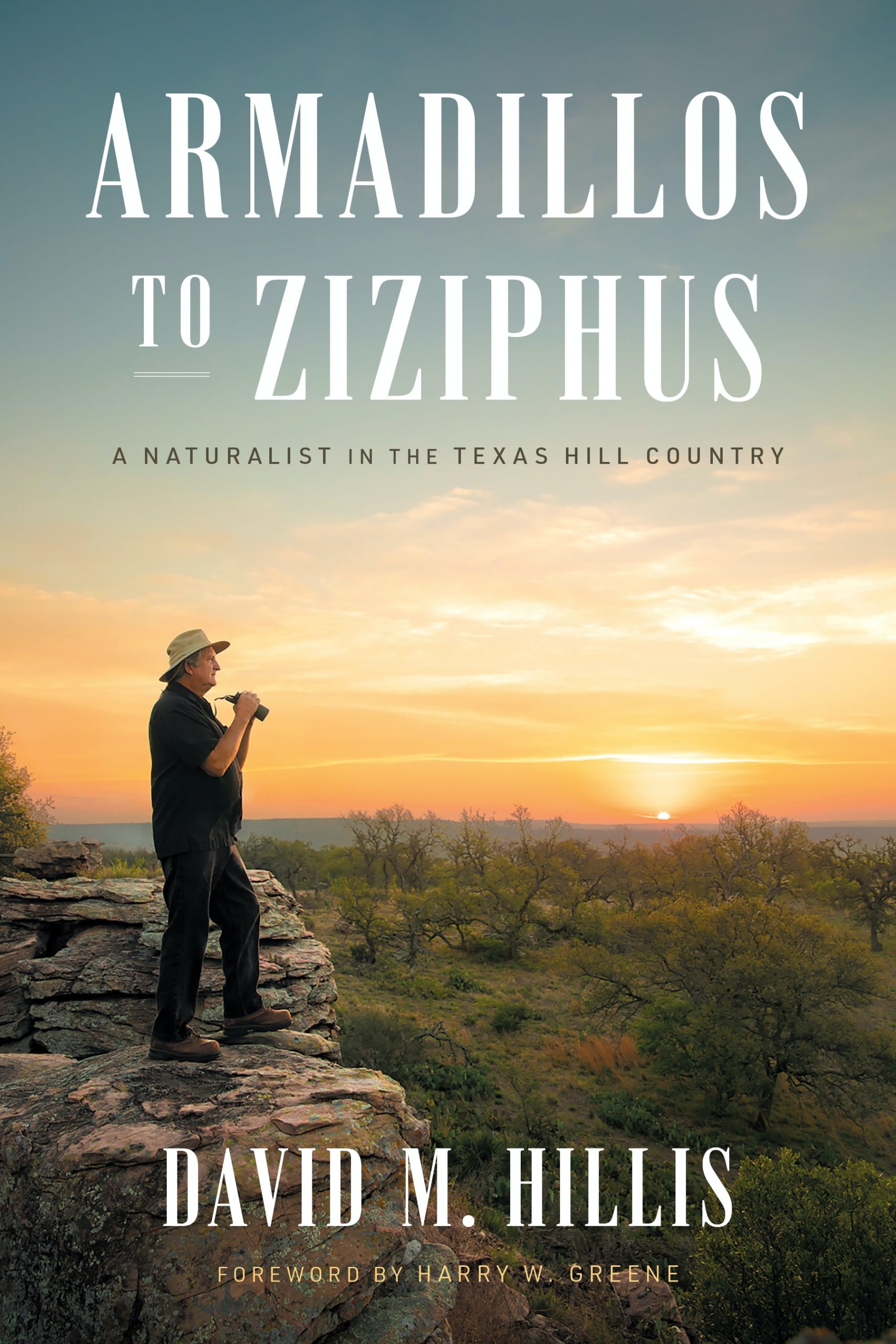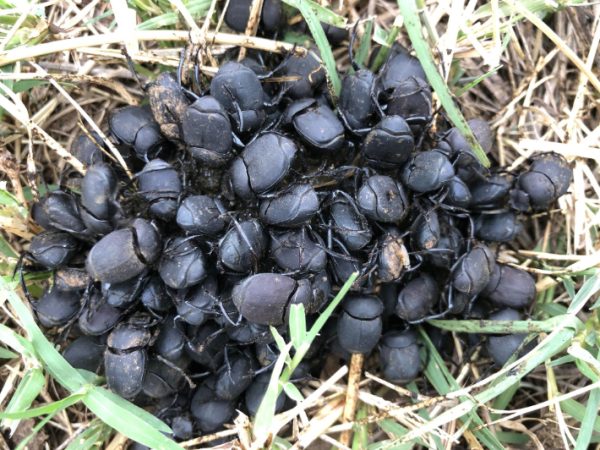The Texas Hill Country is recognized as a unique and special place filled with lifegiving rivers, seasonal streams, ancient rock formations, prehistoric artifacts and a range of biodiversity that defies the region’s meager topsoil, unpredictable rainfall and cycles of drought and wildfire.
In Armadillos to Ziziphus, A Naturalist in the Texas Hill Country, David M. Hillis takes us on a tour of this exceptional landscape in a collection of 54 essays woven from his knowledge as an evolutionary biologist and educator. The collection is stitched together with personal experience from decades of Hillis’s ownership and management of a family ranch in Mason County, appropriately named the Double Helix.
A MacArthur Fellow and distinguished professor of integrative biology at the University of Texas at Austin, Hillis brings an encyclopedic depth of scientific knowledge to the task of explaining the Hill Country’s “natural wealth.” He doesn’t allow scientific jargon or Latin taxonomy to slow his prose, however. Using plain, understandable language, he paints accessible portraits of the land he’s spent a lifetime walking and exploring.
Hillis covers all aspects of the region–from the soil, rocks and geology to the vernal pools and rivers to the living creatures that inhabit these areas. He dissects the region with both practiced ease and great authority, tapping his wisdom as a scientist, as a scholar, and as a lover of nature. The book often reads like personal journal that captures a lifetime of experience.
Through this lens, we begin to see the connections between land, water, plant and animal life that often go unnoticed. As the author states in the foreword, “The more we understand and experience nature, the more of it we will appreciate, and the more we will seek to protect it for future generations to enjoy.”
The most compelling element of the book is the effortless way Hillis includes personal anecdotes to explain the complex interactions of wildlife and ecosystems.
To demonstrate the importance of dung beetles in pasture health, for example, he shares the story of a visiting rancher stopping by the Double Helix to purchase a couple of heifers for his herd.
As Hillis drives his guest around the ranch in search of the cows, the visitor expresses pleasant surprise at the “great grass” he was seeing, as well as the fact that he didn’t see “a single cow pie.” He couldn’t resist asking Hillis: what was the secret to producing such robust pasture with very little visible cow dung?

David M. Hillis, author of Armadillos to Ziziphus. –Courtesy photo
Hillis explained that the cow dung didn’t sit for long at the Double Helix because of the the healthy population of dung beetles. When the visitor remarked that he had dung beetles but not as many as he witnessed here, Hillis asked him if he used anti-fungal treatments like ivermectin to deworm his cows. The visitor responded that he did, and Hillis gently explained that the ivermectin, like many medications, is toxic to dung beetles. It passes through the cows’ digestive systems into the dung, thus poisoning the dung beetle population and reducing their numbers.
Dung beetles play a significant role in the health of grasses and prairie by rolling fresh cow dung and burying it underground where the beneficial insects build and aerate the soil. Removing the cow patties also does away with potential breeding sites for flies and other pests.
In “The Noble Life of a Dung-Roller,” Chapter 19, Hillis sums it up well: “It takes a special kind of person to see beauty in a dung beetle–but what magnificent creatures they are!
Such expressions of the holistic nature of Nature is another strength of this book. Hillis does us all a service by connecting the dots in the ecosystem and showing us how creatures and plants need and serve each other. The earth is an organism, and Hillis underscores this view throughout the book’s 277 pages.
Armadillos to Ziziphus is one of those books that can be read in one sitting or used as a go-to compendium, whereby the reader looks up something sparked by a curious moment. You just saw a hummingbird? See Chapter 34, where you’ll learn that relative to body weight, the hummingbird brain is the largest of any bird, plus many other fun facts.
Hillis will join me for a conversation about Armadillos to Ziziphus, “Exploring the Texas Hill Country” at the Eleventh Annual San Antonio Book Festival this Saturday, April 15 1:30 PM – 2:15 in the Texas Monthly Tent of the San Antonio Public Library, 1201 Avenue B, San Antonio, TX 78215. The event is FREE and open to the public. Hope to see you there.
TOP PHOTO: Dung beetles — Photo courtesy David M. Hillis
Related posts:
- Bird is the Word: FREE San Antonio Book Festival panel to explore migration, the wonders of wings
- In Defense of Plants: explorations of the remarkable nature of plants
- How to plan a successful butterfly garden
- Mostly native butterfly garden outperforms lawn every time
- A year in the life of an urban butterfly garden
- Downtown River walk plot converts to pollinator garden, creature haven
- Converting your Lawn to a Butterfly Garden
- San Antonio becomes first National Wildlife Federation Monarch Champion city
- Tropical Milkweed: To Plant it or Not is Not a Simple Question
Like what you’re reading? Don’t miss a single post from the Texas Butterfly Ranch. Sign up for email delivery, like us on Facebook, or follow us on Twitter, @monikam.



I have just ordered the book from Nowhere Book Store. Professor Hillis sounds to me like a modern day Roy Bedicheck, authour of Adventures of a Texas Naturalist. I can’t wait to get the book.